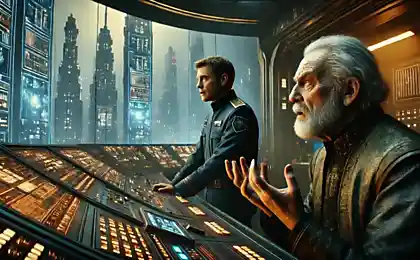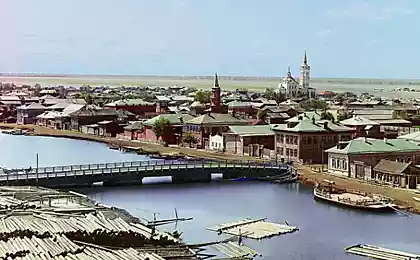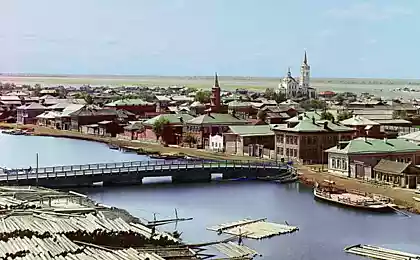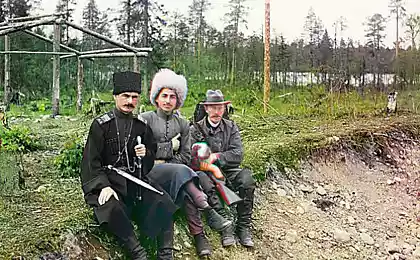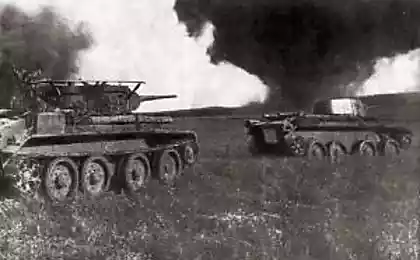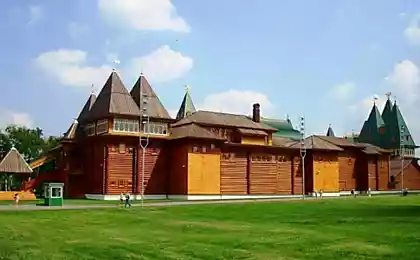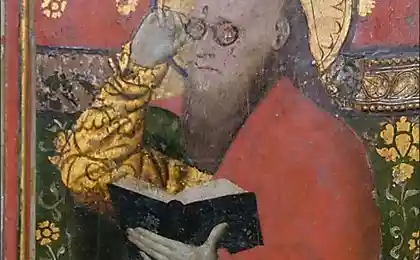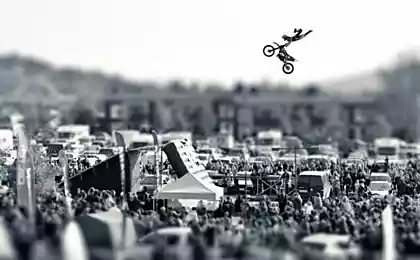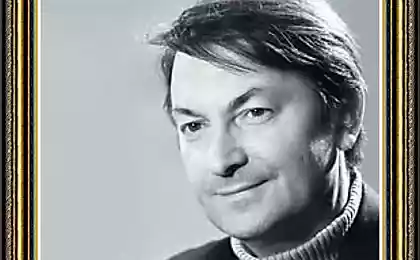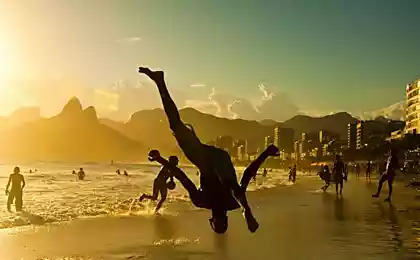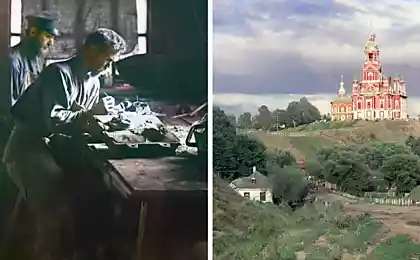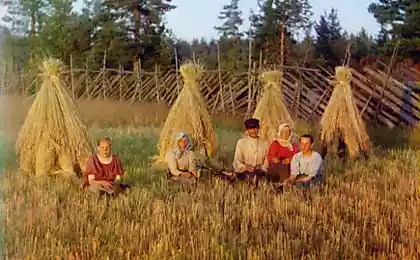1623
Photographer to the Tsar: Sergei Mikhailovich Prokudin-Gorskii
Sergei Mikhailovich Prokudin-Gorskii (August 31, 1863, Moore, Vladimir Province, Russian Empire - September 27, 1944, Paris, France) - a famous Russian photographer, chemist (pupil Mendeleev), an inventor, a member of the Imperial Russian Geographical and Imperial Russian Technical Society. Made a significant contribution to the development of photography and cinematography.
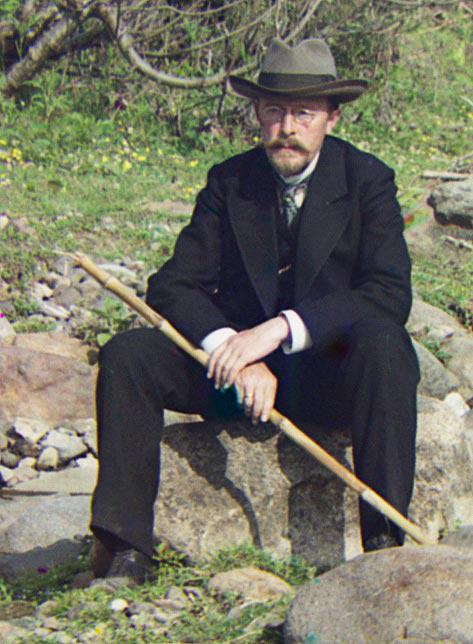
December 13, 1902 Prokudin-Gorsky first announced the creation of color slides by the method of three-color photography, and in 1905 patented his sensitizer, far superior in quality similar development of foreign chemists, including sensitizer Meath. The composition of the new sensitizer did bromoserebryanuyu plate equally sensitive to the entire color spectrum.

In May 1908, Prokudin-Gorsky went to Yasnaya Polyana, where he made a color photographic portrait of Leo Tolstoy. In his notes, Prokudin-Gorsky said that the writer "particularly keenly interested in all the latest discoveries in various fields, as well as the issue and transfer of images in true colors." In addition, they made known photograph of Chaliapin. Prokudin-Gorsky also photographed members of the royal family, but these pictures have not been able to find; maybe they lost.
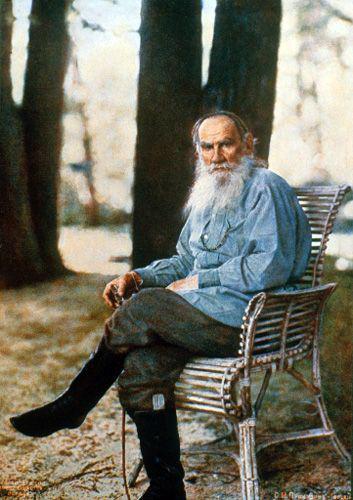
May 30, 1908 at the Academy of Arts was held display color projections of photographs taken by Prokudin-Gorsky. His images of ancient vases - exhibits of the Hermitage - were later used for the restoration of the lost colors.
Already at that time Sergey conceives an ambitious project: to capture in color photographs of his day Russia, its culture, history and modernization. Prokudin-Gorsky in 1909 received an audience with Czar Nicholas II, who instructs him to take pictures of all sorts of aspects of life in all areas, then constituted the Russian Empire.
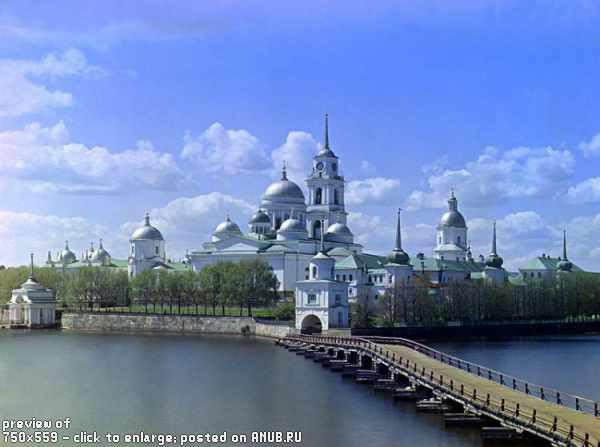
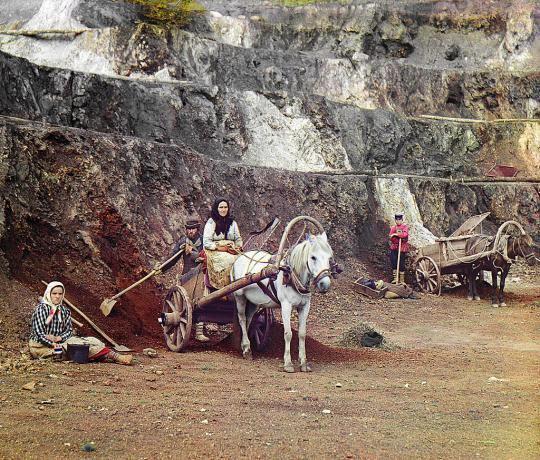
In the years 1909-1915 Prokudin-Gorsky traveled a considerable part of Russia, photographing ancient temples, monasteries, factories, city views and a variety of domestic scenes. In the same period in Samarkand Prokudin-Gorsky experiences they invented color camera for filming; however, the quality of the captured movie proved unsatisfactory. After the First World War, Prokudin-Gorsky made news in pictures of hostilities, but was later forced to abandon further photographic experiments and took censorship arriving from abroad cinematic tapes analysis fotopreparatov and crew training aircraft aerial photography.
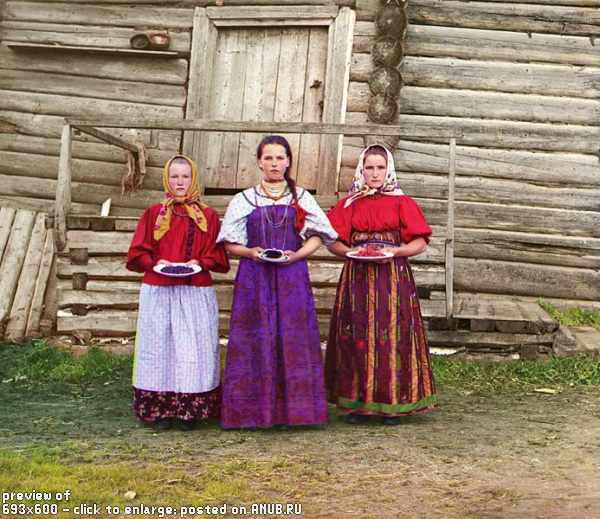
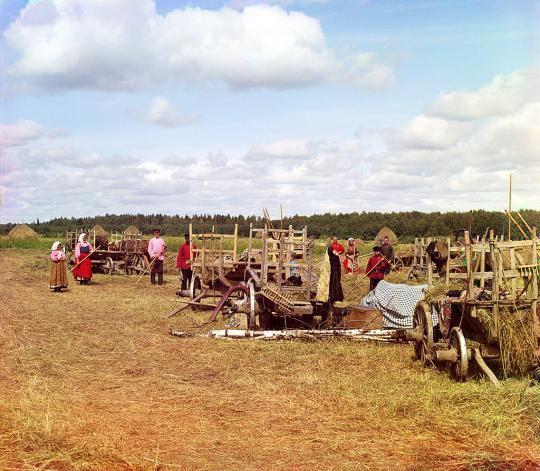
Soon after the October Revolution of 1917 he became a professor which was established by AVLunacharsky fotokinoinstituta. The last time his collection of photographs exhibited in Russia March 19, 1918, but soon after that Prokudin-Gorsky left the RSFSR, took with him almost all the photographic plates taken with the exception of removal from the pictures of the royal family and strategic facilities.


At the beginning of the XX century did not exist multilayer color photographic materials, so Prokudin-Gorsky used black-and-white photographic plates (which he sensitized own recipes) and a camera of his own design (its exact device is unknown, probably it was similar to the camera system of the German chemist - Professor Meath). Through color filters of blue, green and red colors make three quick series of pictures of the same scene, and then gets three black-and-white negatives, one above the other on a photographic plate. With this triple triple negative was produced as positive (probably by contact printing). To view these photos to use the projector with three lenses, arranged in front of three frames on a photographic plate. Each frame is projected through the filter of the same color as the one through which it was removed. With the addition of three images (red, green, and blue) on the screen is a full color image.
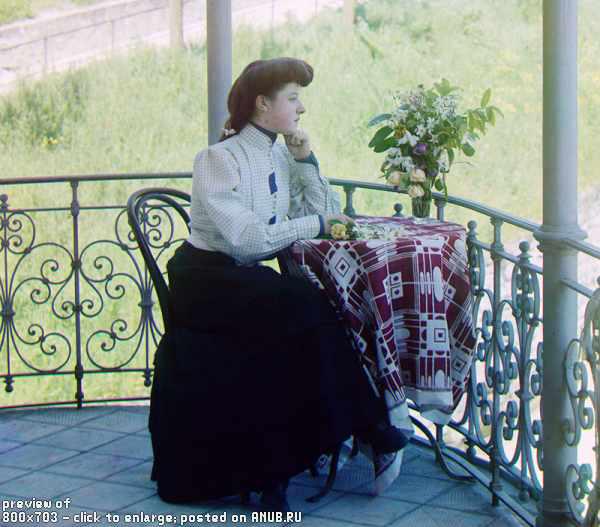

The composition of the new sensitizer patented Prokudin-Gorsky, did bromoserebryanuyu plate equally sensitive to the entire color spectrum. "St. Petersburg newspaper" reported in December 1906 that, improving the sensitivity of their plates, the researcher suggests to demonstrate "snapshots in natural colors, which is a great success, as so far no one has received." Perhaps projection shows pictures Prokudin-Gorsky became the first in the world slideshows.
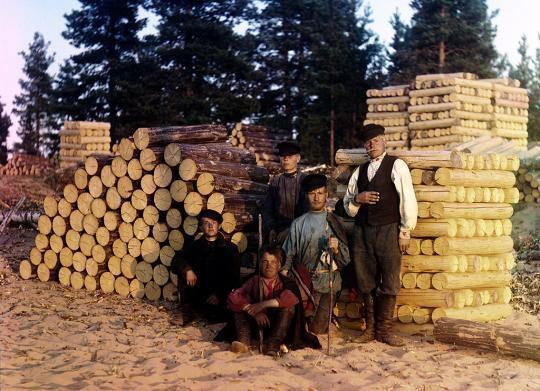
Prokudin-Gorsky contributed to the two existing at the time the direction of improvement of color photography: a way to reduce the shutter speed (in its method of Prokudin-Gorsky managed to make it possible for the second exposure); and, secondly, to increase the possibility of replicating the picture. He also serves on the International Congress on Applied Chemistry.
Pictures are not made on three different plates, and one in the vertical position, thereby accelerating the process of filming, producing a shift plate.
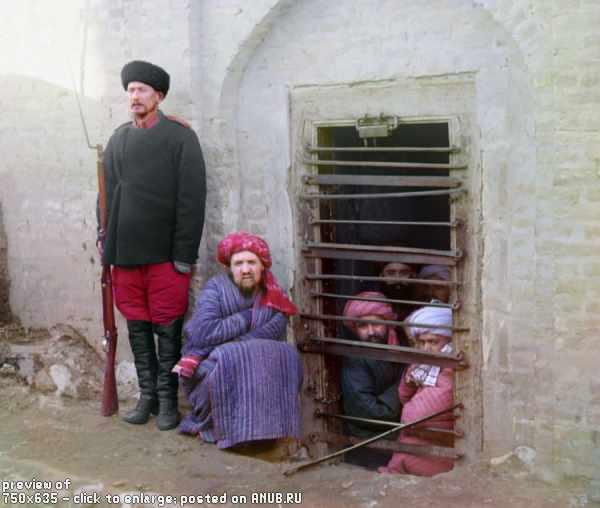
Prokudin-Gorsky is working on a design for a color movie camera shooting in his method and produces a shooting in Turkestan in 1911. In order to improve his invention - color film he establishes in 1913 Joint Stock Company "Biohrom." Sergey Prokudin-Gorsky continues to study and achieve new successes. He patented in Germany, England, France, Italy cheap method of making color slides of film for cinematography.
In 1922, he received a British patent for an optical system for exposing one of three negatives through the filters.

There is also a method by which an image with photographic plates can be obtained on paper. Up to 1917 in Russia were published more than a hundred color photographs Prokudin-Gorsky, of which 94 - in the form of photo greeting cards, and a significant number - in books and pamphlets. For example, in the book of PG Vasenko "boyars Romanovs and the reign of Mikhail Fedorovich to the kingdom" (SPB., 1913) was published on 22 high-quality color reproductions of photographs Prokudin-Gorsky, including pictures taken in Moscow. By 1913, the technology allows the printing of color photographs Prokudin-Gorsky almost as modern (see. "Russian folk art at the Second All-Russian handicraft exhibition in Petrograd in 1913," Pg., 1914). Some color photographs Prokudin-Gorsky were published in large format in the form of a "wall paintings" (eg, A portrait of Tolstoy). The exact number printed in Russia up to 1917 color photographs Prokudin-Gorsky remains unknown.
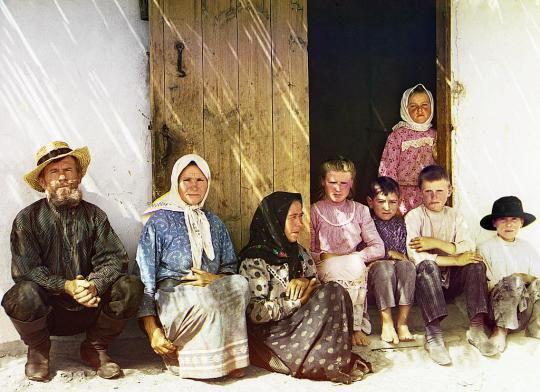
It should be noted that Prokudin-Gorsky was not the only one who shot color photographs in Russia until 1917. However, only he used the method of color separation (the method of Adolf Miethe). Other color photos make shooting on a completely different technology, namely the method autochromes (eg, General Vishnjakov photographer Steinberg, Peter, Trapani). This method was easier to use, but let's rather grainy image, which quickly faded paint. In addition, only a collection of Prokudin-Gorsky was made (and lost) in a significant amount.
Collection of photographs Prokudin-Gorsky was purchased from his heirs in 1948, the Library of Congress and has long remained unknown to the general publike.
Many photos Prokudin-Gorsky before the revolution were published on postcards and as illustrations in books. However, the technology typographic reproduction of color images with color separation negatives was at that time quite difficult, and the results are of poor quality.
Development of computer image processing technology in the late XX century allowed to process these images and show the unique species of imperial Russia in color.
In July 1991, was first drawn up a computer database of images Prokudin-Gorsky, which continued then grows and changes.
In 2000 JJT contract with the Library of Congress to scan all 1,902 glass negatives from the collection of Prokudin-Gorsky. Scanning is performed in the Grayscale c 16-bit color depth and resolution up to 1000 dpi. Files from scanned images have a size of about 70 MB. All of these files are available on the Library of Congress server and is available for free download. Scanned images are inverted (converted to digital methods positives).
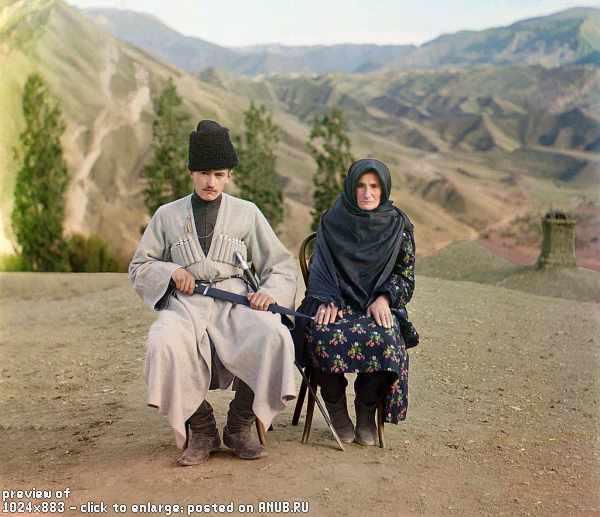
Staff prepares color photographs for the exhibition, experiencing technical difficulties. When combined in a graphic editor, the three color channels in one place the frame (for example, in the center) were observed bundles of colored outlines in his other parts. The reasons for these discrepancies of color images is not quite clear: perhaps they are caused by lens chromatic aberration and small non-uniform thickness of filters used in the shooting. For precise alignment of the contours in the image color channels is not enough displacements and rotations of these images must be subjected to their small deformations. Manual execution of these strains - the process is quite long and laborious. In addition, the images obtained were in need of correction, which was carried out by a professional photographer based on his experience and vkusa.
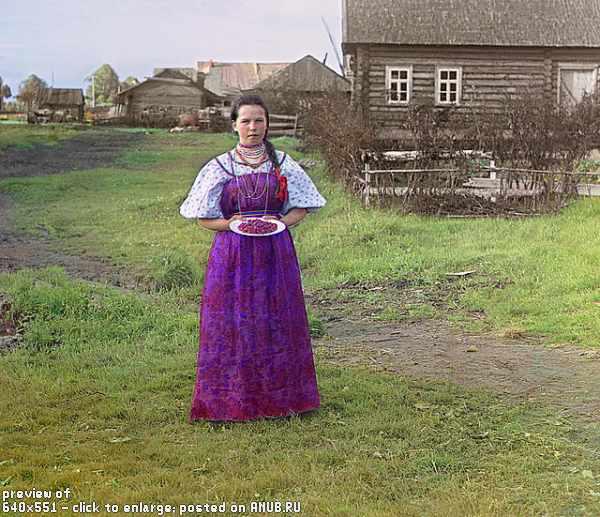
Restoring all the surviving color images collection Prokudin-Gorsky was first performed in the Laboratory of Russian digital technologies in the restoration of the Scientific Council on Cybernetics of the Russian Academy of Sciences and restoration center "Restorer-M" under the leadership of Victor Minakhin. For this purpose, we developed a special software that allows you to perform a combination of color contours of the image across the frame with an accuracy of one pixel. To find the optimal transformation was used numerical algorithm Levenberg-Marquardt. The results of this work - 1902 printed color images - were shown at the exhibition "The Splendors of Russia in Natural Colors: all Prokudin-Gorsky, 1905-1916", held November 19, 2003 - February 8, 2004 at the State Museum of Architecture in Moscow. They can also be seen on the site "Peace 1900-1917 in color»

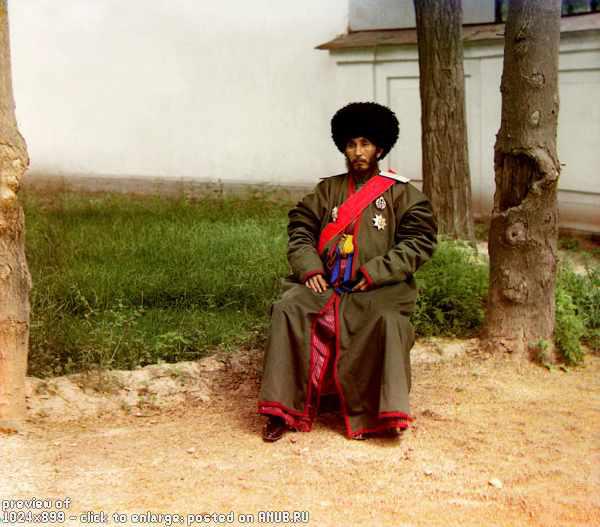
When photographing method Prokudin-Gorsky individual images were not made at the same time, and with a certain period of time. As a result, moving objects: flowing water, moving clouds in the sky, smoke, swaying branches of trees, the movement of persons and figures of people in the frame, etc. reproduced in photographs distorted, as an offset colored outlines. These distortions are extremely difficult to correct manually. In 2004, the Library of Congress had signed a contract with Blaise Agvera and Arkas to the development of tools to eliminate artifacts due to moving objects when shooting
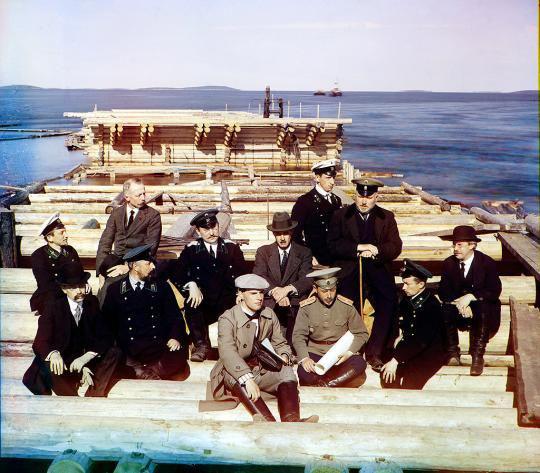
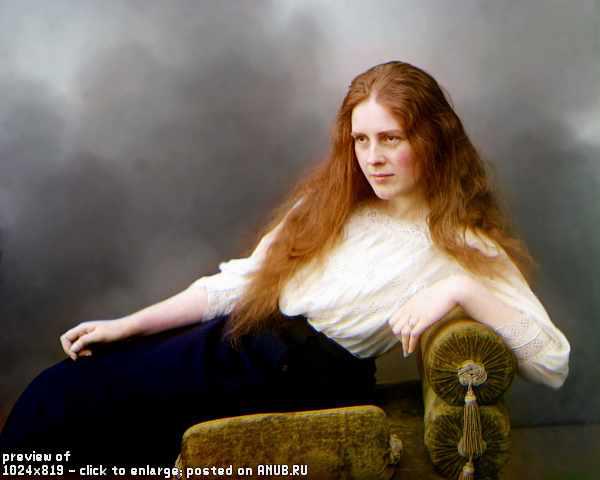
All "American" (ie stored in the Library of Congress), part of the collection of Prokudin-Gorsky has 1902 triple negatives and 2,448 black-and-white prints in albums (collectively - about 2,600 of the original image). Work on reconciliation scanned triple negatives and restoration thus obtained digital color image continues to this day.
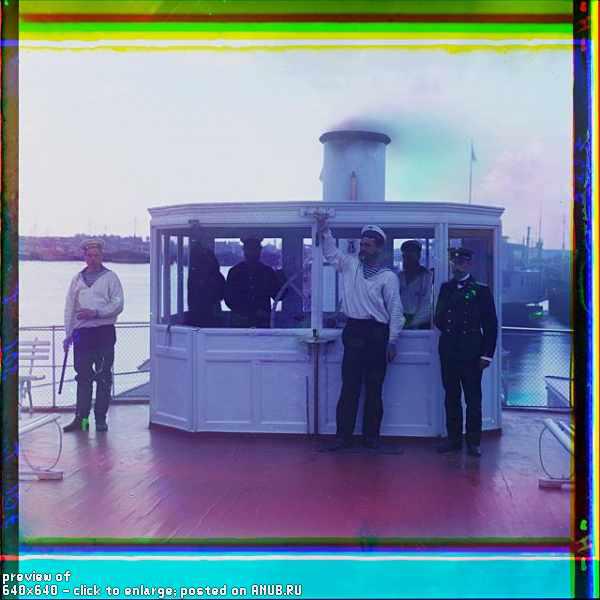

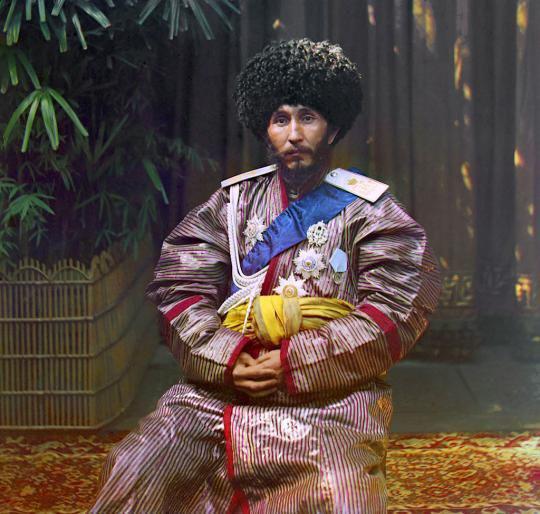
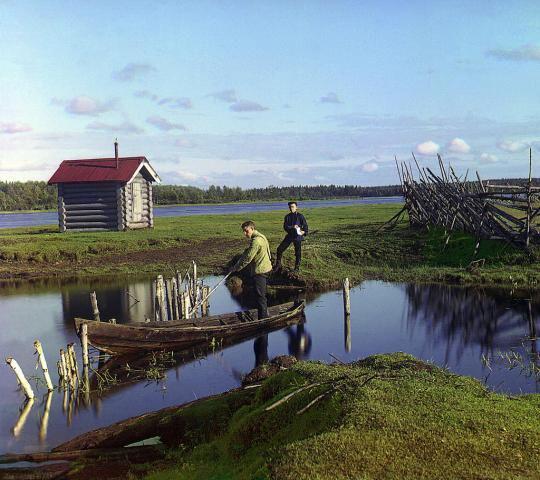
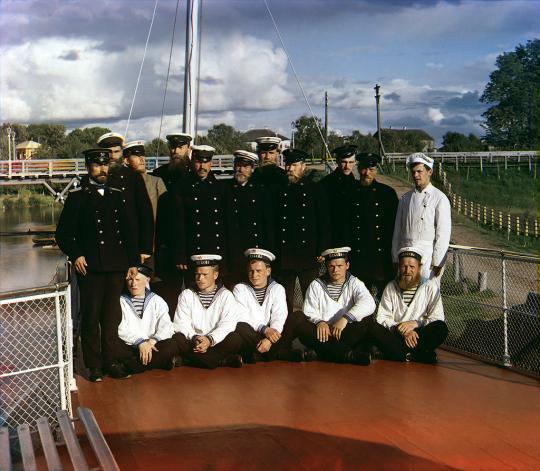
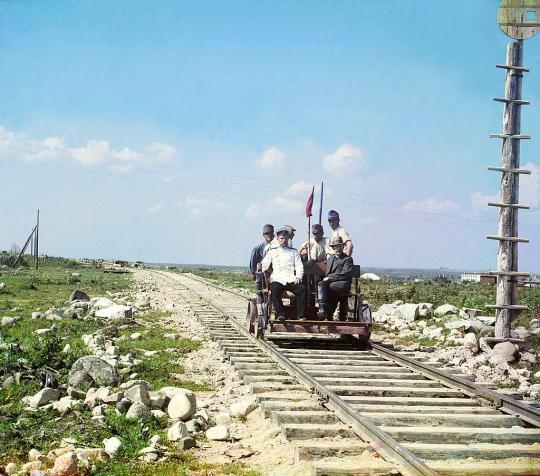
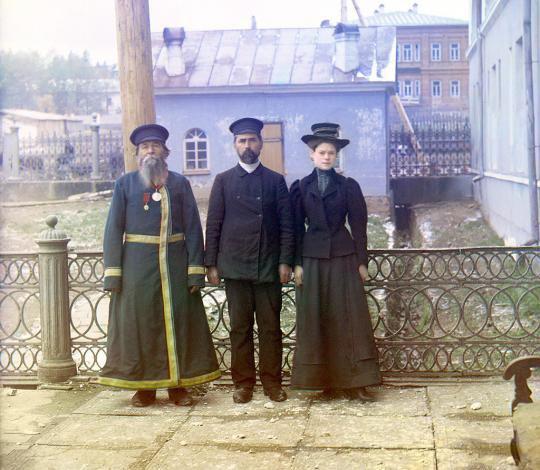
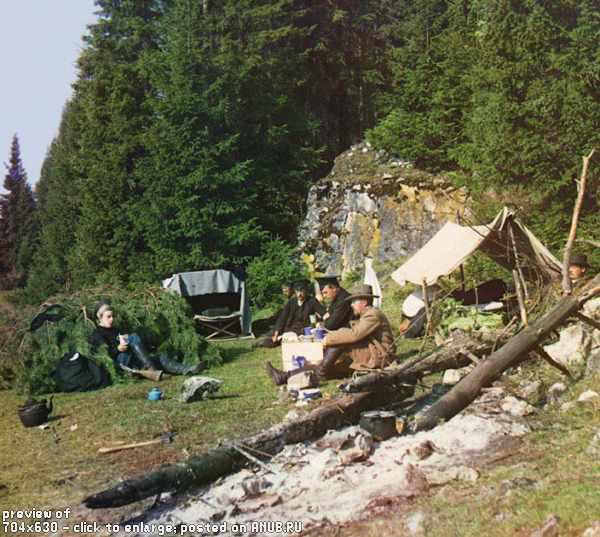

December 13, 1902 Prokudin-Gorsky first announced the creation of color slides by the method of three-color photography, and in 1905 patented his sensitizer, far superior in quality similar development of foreign chemists, including sensitizer Meath. The composition of the new sensitizer did bromoserebryanuyu plate equally sensitive to the entire color spectrum.

In May 1908, Prokudin-Gorsky went to Yasnaya Polyana, where he made a color photographic portrait of Leo Tolstoy. In his notes, Prokudin-Gorsky said that the writer "particularly keenly interested in all the latest discoveries in various fields, as well as the issue and transfer of images in true colors." In addition, they made known photograph of Chaliapin. Prokudin-Gorsky also photographed members of the royal family, but these pictures have not been able to find; maybe they lost.

May 30, 1908 at the Academy of Arts was held display color projections of photographs taken by Prokudin-Gorsky. His images of ancient vases - exhibits of the Hermitage - were later used for the restoration of the lost colors.
Already at that time Sergey conceives an ambitious project: to capture in color photographs of his day Russia, its culture, history and modernization. Prokudin-Gorsky in 1909 received an audience with Czar Nicholas II, who instructs him to take pictures of all sorts of aspects of life in all areas, then constituted the Russian Empire.


In the years 1909-1915 Prokudin-Gorsky traveled a considerable part of Russia, photographing ancient temples, monasteries, factories, city views and a variety of domestic scenes. In the same period in Samarkand Prokudin-Gorsky experiences they invented color camera for filming; however, the quality of the captured movie proved unsatisfactory. After the First World War, Prokudin-Gorsky made news in pictures of hostilities, but was later forced to abandon further photographic experiments and took censorship arriving from abroad cinematic tapes analysis fotopreparatov and crew training aircraft aerial photography.


Soon after the October Revolution of 1917 he became a professor which was established by AVLunacharsky fotokinoinstituta. The last time his collection of photographs exhibited in Russia March 19, 1918, but soon after that Prokudin-Gorsky left the RSFSR, took with him almost all the photographic plates taken with the exception of removal from the pictures of the royal family and strategic facilities.


At the beginning of the XX century did not exist multilayer color photographic materials, so Prokudin-Gorsky used black-and-white photographic plates (which he sensitized own recipes) and a camera of his own design (its exact device is unknown, probably it was similar to the camera system of the German chemist - Professor Meath). Through color filters of blue, green and red colors make three quick series of pictures of the same scene, and then gets three black-and-white negatives, one above the other on a photographic plate. With this triple triple negative was produced as positive (probably by contact printing). To view these photos to use the projector with three lenses, arranged in front of three frames on a photographic plate. Each frame is projected through the filter of the same color as the one through which it was removed. With the addition of three images (red, green, and blue) on the screen is a full color image.


The composition of the new sensitizer patented Prokudin-Gorsky, did bromoserebryanuyu plate equally sensitive to the entire color spectrum. "St. Petersburg newspaper" reported in December 1906 that, improving the sensitivity of their plates, the researcher suggests to demonstrate "snapshots in natural colors, which is a great success, as so far no one has received." Perhaps projection shows pictures Prokudin-Gorsky became the first in the world slideshows.

Prokudin-Gorsky contributed to the two existing at the time the direction of improvement of color photography: a way to reduce the shutter speed (in its method of Prokudin-Gorsky managed to make it possible for the second exposure); and, secondly, to increase the possibility of replicating the picture. He also serves on the International Congress on Applied Chemistry.
Pictures are not made on three different plates, and one in the vertical position, thereby accelerating the process of filming, producing a shift plate.

Prokudin-Gorsky is working on a design for a color movie camera shooting in his method and produces a shooting in Turkestan in 1911. In order to improve his invention - color film he establishes in 1913 Joint Stock Company "Biohrom." Sergey Prokudin-Gorsky continues to study and achieve new successes. He patented in Germany, England, France, Italy cheap method of making color slides of film for cinematography.
In 1922, he received a British patent for an optical system for exposing one of three negatives through the filters.

There is also a method by which an image with photographic plates can be obtained on paper. Up to 1917 in Russia were published more than a hundred color photographs Prokudin-Gorsky, of which 94 - in the form of photo greeting cards, and a significant number - in books and pamphlets. For example, in the book of PG Vasenko "boyars Romanovs and the reign of Mikhail Fedorovich to the kingdom" (SPB., 1913) was published on 22 high-quality color reproductions of photographs Prokudin-Gorsky, including pictures taken in Moscow. By 1913, the technology allows the printing of color photographs Prokudin-Gorsky almost as modern (see. "Russian folk art at the Second All-Russian handicraft exhibition in Petrograd in 1913," Pg., 1914). Some color photographs Prokudin-Gorsky were published in large format in the form of a "wall paintings" (eg, A portrait of Tolstoy). The exact number printed in Russia up to 1917 color photographs Prokudin-Gorsky remains unknown.

It should be noted that Prokudin-Gorsky was not the only one who shot color photographs in Russia until 1917. However, only he used the method of color separation (the method of Adolf Miethe). Other color photos make shooting on a completely different technology, namely the method autochromes (eg, General Vishnjakov photographer Steinberg, Peter, Trapani). This method was easier to use, but let's rather grainy image, which quickly faded paint. In addition, only a collection of Prokudin-Gorsky was made (and lost) in a significant amount.
Collection of photographs Prokudin-Gorsky was purchased from his heirs in 1948, the Library of Congress and has long remained unknown to the general publike.

Many photos Prokudin-Gorsky before the revolution were published on postcards and as illustrations in books. However, the technology typographic reproduction of color images with color separation negatives was at that time quite difficult, and the results are of poor quality.
Development of computer image processing technology in the late XX century allowed to process these images and show the unique species of imperial Russia in color.
In July 1991, was first drawn up a computer database of images Prokudin-Gorsky, which continued then grows and changes.
In 2000 JJT contract with the Library of Congress to scan all 1,902 glass negatives from the collection of Prokudin-Gorsky. Scanning is performed in the Grayscale c 16-bit color depth and resolution up to 1000 dpi. Files from scanned images have a size of about 70 MB. All of these files are available on the Library of Congress server and is available for free download. Scanned images are inverted (converted to digital methods positives).

Staff prepares color photographs for the exhibition, experiencing technical difficulties. When combined in a graphic editor, the three color channels in one place the frame (for example, in the center) were observed bundles of colored outlines in his other parts. The reasons for these discrepancies of color images is not quite clear: perhaps they are caused by lens chromatic aberration and small non-uniform thickness of filters used in the shooting. For precise alignment of the contours in the image color channels is not enough displacements and rotations of these images must be subjected to their small deformations. Manual execution of these strains - the process is quite long and laborious. In addition, the images obtained were in need of correction, which was carried out by a professional photographer based on his experience and vkusa.


Restoring all the surviving color images collection Prokudin-Gorsky was first performed in the Laboratory of Russian digital technologies in the restoration of the Scientific Council on Cybernetics of the Russian Academy of Sciences and restoration center "Restorer-M" under the leadership of Victor Minakhin. For this purpose, we developed a special software that allows you to perform a combination of color contours of the image across the frame with an accuracy of one pixel. To find the optimal transformation was used numerical algorithm Levenberg-Marquardt. The results of this work - 1902 printed color images - were shown at the exhibition "The Splendors of Russia in Natural Colors: all Prokudin-Gorsky, 1905-1916", held November 19, 2003 - February 8, 2004 at the State Museum of Architecture in Moscow. They can also be seen on the site "Peace 1900-1917 in color»


When photographing method Prokudin-Gorsky individual images were not made at the same time, and with a certain period of time. As a result, moving objects: flowing water, moving clouds in the sky, smoke, swaying branches of trees, the movement of persons and figures of people in the frame, etc. reproduced in photographs distorted, as an offset colored outlines. These distortions are extremely difficult to correct manually. In 2004, the Library of Congress had signed a contract with Blaise Agvera and Arkas to the development of tools to eliminate artifacts due to moving objects when shooting


All "American" (ie stored in the Library of Congress), part of the collection of Prokudin-Gorsky has 1902 triple negatives and 2,448 black-and-white prints in albums (collectively - about 2,600 of the original image). Work on reconciliation scanned triple negatives and restoration thus obtained digital color image continues to this day.








